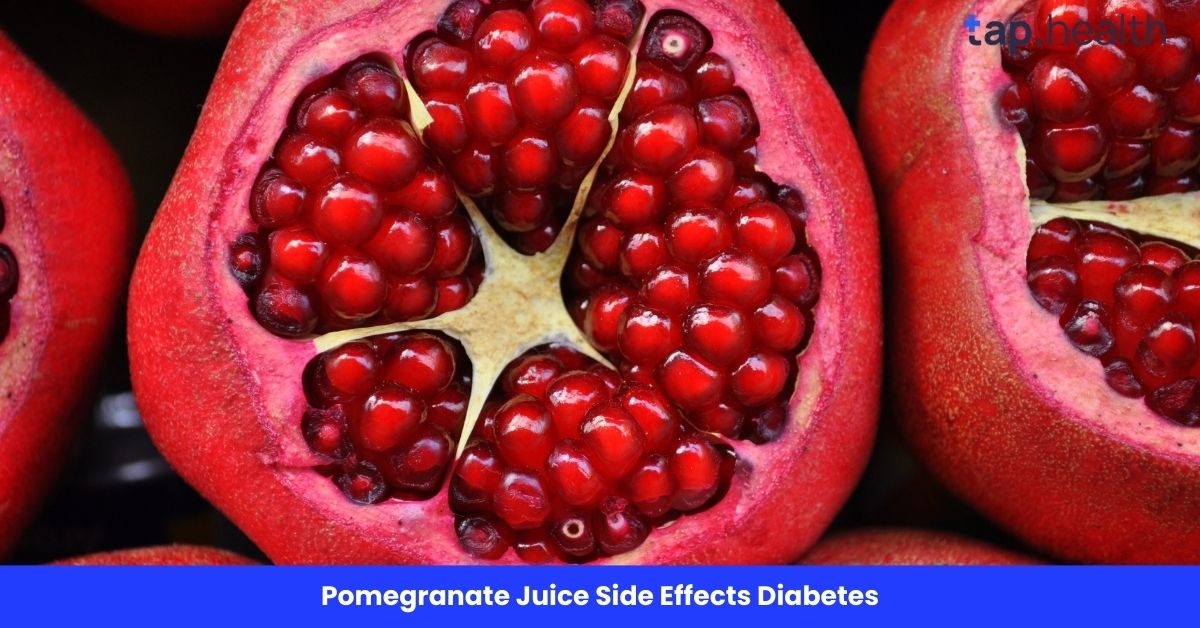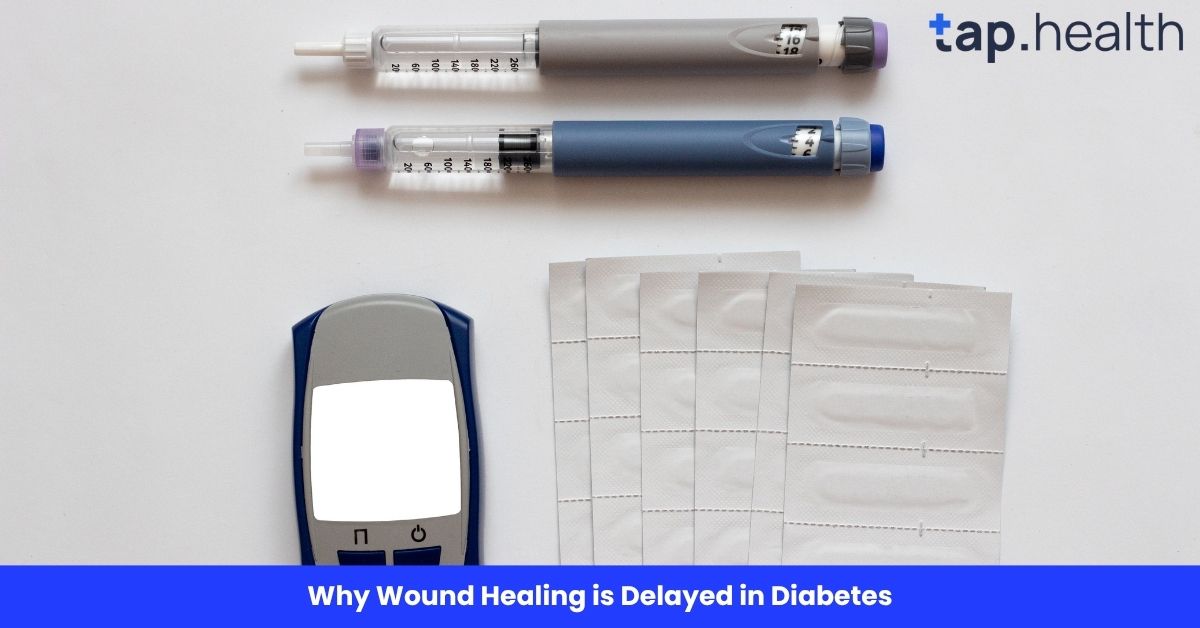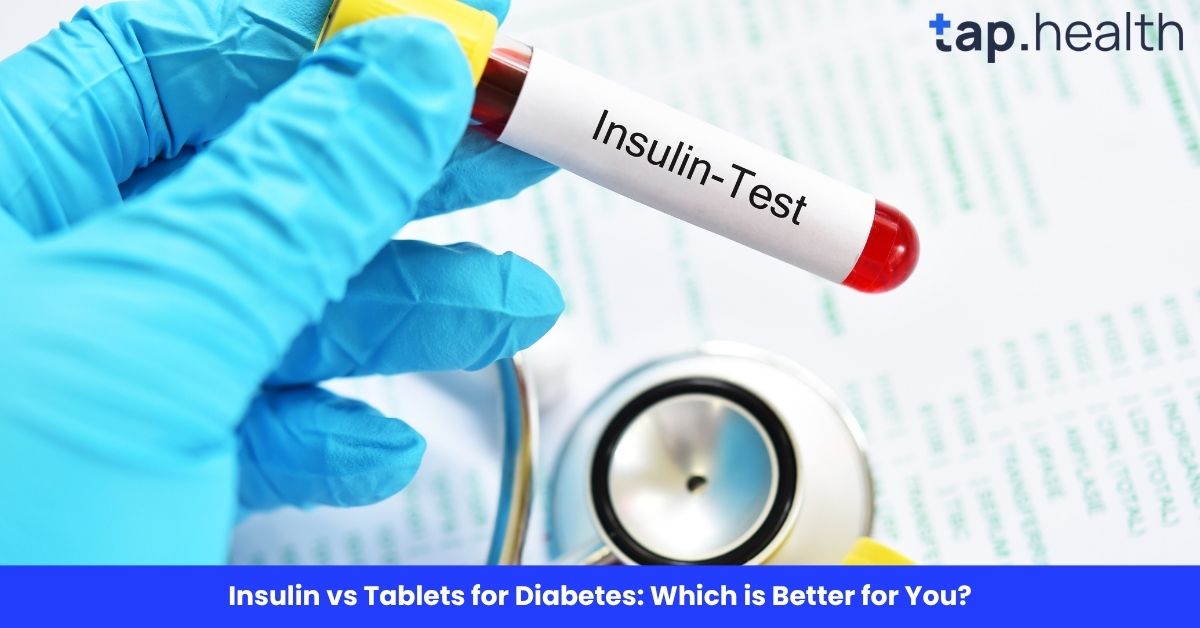You’ve probably heard that pomegranates are a “superfood.” They’re bursting with antioxidants and are great for heart health. So, when you see a bottle of 100% pomegranate juice, it’s easy to think, “This must be a healthy choice for my diabetes.”
But then, a nagging doubt creeps in. It’s sweet. Very sweet. Could something so sweet actually be hiding some unwanted side effects for your blood sugar?
That doubt is your smart brain asking a really important question. The relationship between pomegranate juice and diabetes isn’t as simple as a yes or no. While it has some fantastic health properties, it also comes with significant caveats that anyone with blood sugar concerns needs to understand.
This article isn’t here to scare you or to sell you anything. It’s here to give you the full, honest picture. We will dive deep into the potential side effects of pomegranate juice for people with diabetes, but we’ll also look at its benefits. We’ll compare it to the whole fruit and give you clear, actionable advice on how to approach it safely.
Let’s untangle the sweet truth about pomegranate juice and diabetes.
Understanding Diabetes and Blood Sugar Basics
Before we talk about juice, let’s quickly level-set on what diabetes is. This will make the “why” behind the side effects much clearer.
What is Diabetes, Really?
Think of your body’s cells as tiny little houses that need energy to function. Their favorite source of energy is a sugar called glucose, which comes from the food you eat.
But glucose can’t just walk into these houses. It needs a key to unlock the door. That key is a hormone called insulin, which is made by your pancreas.
- In a healthy body: You eat, your blood sugar rises, your pancreas releases insulin, the insulin “unlocks” your cells, glucose enters, and your blood sugar level goes back down. It’s a perfect, smooth system.
- In Type 2 Diabetes: Your body either doesn’t make enough insulin, or your cells have become resistant to it—the “locks” are rusty, and the insulin key doesn’t work well. This leaves too much glucose stuck in your bloodstream, leading to high blood sugar.
- In Type 1 Diabetes: The body’s immune system attacks and destroys the insulin-producing cells in the pancreas. No keys are made at all.
Managing diabetes is all about keeping the amount of glucose in your bloodstream from getting too high.
The Role of Carbohydrates and Sugar
Carbohydrates—found in bread, pasta, fruit, and sweets—are broken down into glucose in your body. This is why what you eat has a direct and powerful impact on your blood sugar levels.
All carbs affect blood sugar, but they don’t all affect it in the same way or at the same speed. This is where the concept of Glycemic Index (GI) comes in.
Pomegranate Juice vs. Whole Pomegranate: A Critical Difference
This is the single most important concept in this entire article. Understanding this distinction explains almost all the potential side effects.
The Magic of Fiber in Whole Fruit
A whole pomegranate is a nutritional gem. The juicy, edible seeds (called arils) are packed with:
- Vitamins: Like Vitamin C and Vitamin K.
- Powerful Antioxidants: Such as punicalagins and anthocyanins, which fight inflammation.
- Fiber: A half-cup of arils contains about 3.5 grams of dietary fiber.
Fiber is a superstar for diabetes management. It’s a type of carbohydrate that your body cannot digest. Because it can’t be broken down, it slows down the digestion of the other carbs and sugars in the food. It acts like a traffic cop, controlling the flow of sugar into your bloodstream and preventing a traffic jam (a blood sugar spike).
What Happens When You Make Juice?
When you take a pomegranate and squeeze it into juice, a crucial change happens. You extract the liquid, which contains the water, vitamins, antioxidants, and natural sugars.
But you leave behind almost all of the fiber.
Let’s look at a direct comparison:
| Whole Pomegranate Arils (1/2 cup) | 100% Pomegranate Juice (1 cup) | |
|---|---|---|
| Calories | 72 | 134 |
| Total Carbohydrates | 16 g | 33 g |
| Sugar | 12 g | 31 g |
| Fiber | 3.5 g | 0.1 g (virtually none) |
| Glycemic Load (approx.) | Low | Medium |
As you can see, a cup of juice has:
- Nearly triple the sugar of a half-cup of whole arils.
- Almost no fiber to slow that sugar down.
Without fiber, the natural sugars in the juice (fructose and glucose) are absorbed into your bloodstream very quickly. For someone with diabetes, this can lead to a rapid and sharp rise in blood sugar levels.
Potential Side Effects of Pomegranate Juice for Diabetics
Now that we understand the fiber issue, let’s list out the specific potential side effects.
1. Blood Sugar Spikes (Hyperglycemia)
This is the most direct and common side effect. Drinking pomegranate juice, especially in a typical glass (which is often more than one cup), delivers a large dose of sugar to your system all at once.
Without the modulating effect of fiber, your body struggles to manage this sudden influx. This can lead to hyperglycemia (high blood sugar), which comes with its own set of unpleasant symptoms:
- Increased thirst and a dry mouth
- Frequent urination
- Headaches
- Blurred vision
- Fatigue and low energy
Consistently high blood sugar is the primary cause of the long-term complications of diabetes, such as nerve damage, kidney disease, and vision problems.
2. Weight Gain
Pomegranate juice is calorie-dense. Those calories come almost exclusively from sugar. Drinking liquid calories doesn’t make you feel as full as eating solid food does.
It’s very easy to drink a large glass of juice (200+ calories) without it affecting your appetite for your next meal. Over time, consuming these extra calories can lead to weight gain. For people with Type 2 diabetes, weight gain can worsen insulin resistance, making blood sugar even harder to control. It’s a vicious cycle.
3. Interaction with Diabetes Medications
This is a serious and often overlooked side effect. Some studies suggest that pomegranate juice may interfere with how your body processes certain medications.
Your liver uses a specific set of enzymes (called cytochrome P450 enzymes, like CYP3A4) to break down and metabolize many drugs. Pomegranate juice can inhibit these enzymes.
What does this mean? If the enzyme is blocked, the medication isn’t broken down as quickly. This can cause the drug to build up to higher-than-intended levels in your bloodstream.
- The Big Concern: This interaction is particularly noted with certain cholesterol-lowering statin drugs, like atorvastatin (Lipitor), simvastatin (Zocor), and others. Having excessively high levels of these drugs in your system can increase your risk of severe side effects, like muscle pain and liver damage.
- Blood Pressure Medications: There is also some evidence it could interact with certain blood pressure drugs.
It is absolutely crucial to talk to your doctor before making pomegranate juice a regular part of your diet if you are on any medication.
4. High Potassium Levels (Hyperkalemia)
Pomegranate juice is a rich source of potassium. A single cup can contain over 500 mg of potassium.
For most people, this is a good thing! Potassium is essential for heart and muscle function. However, people with diabetic kidney disease (nephropathy) often have trouble filtering excess potassium from their blood. This can lead to a dangerous condition called hyperkalemia (high potassium levels), which can cause heart rhythm problems and even heart attack.
If you have any kidney complications related to diabetes, you must be extremely cautious with high-potassium foods and juices like pomegranate.
Are There Any Benefits of Pomegranate Juice for Diabetics?
Despite the side effects, it wouldn’t be fair to ignore the science that shows potential benefits. The key is in the powerful antioxidants.
The Power of Antioxidants
Pomegranate juice is one of the most antioxidant-rich beverages available. Its antioxidants, particularly punicalagins, have been studied for their effects on several diabetes-related issues:
- Improving Insulin Sensitivity: Some animal and small human studies suggest that these compounds may help make cells less resistant to insulin (greasing those rusty locks), potentially improving how the body uses sugar.
- Reducing Inflammation: Chronic inflammation is a key driver of insulin resistance. The antioxidants in pomegranate juice have strong anti-inflammatory properties.
- Protecting Heart Health: People with diabetes are at a much higher risk for heart disease. Research indicates pomegranate juice may help reduce “bad” LDL cholesterol oxidation, lower blood pressure, and improve arterial health.
The Important Caveat: Most of this promising research is based on controlled studies where participants consumed specific, often moderate, amounts. The benefits do not negate the very real risk of blood sugar spikes. The positive effects on heart health and inflammation are a long-game benefit, while the blood sugar spike is an immediate consequence.
How to Safely Incorporate Pomegranate Juice if You Have Diabetes
You might still want to enjoy the taste and potential benefits of pomegranate juice. It is possible to do so very carefully by following these strict guidelines.
1. The Golden Rule: Portion Control is Everything
This is non-negotiable. Do not drink a full glass.
- A safe serving size is no more than 2 to 4 ounces (1/4 to 1/2 cup). This is a very small amount—think a small shot glass or a couple of generous sips.
- Use a measuring cup to be sure. Our eyes are terrible at judging liquid volumes.
2. Never Drink It on an Empty Stomach
Drinking juice alone is a recipe for a blood sugar spike. Always have it with or immediately after a balanced meal that contains:
- Protein: (e.g., chicken, fish, eggs, tofu, Greek yogurt)
- Healthy Fats: (e.g., avocado, nuts, olive oil)
- Plenty of Fiber: (e.g., vegetables, whole grains)
The protein, fat, and fiber from the meal will significantly slow down the absorption of the sugar from the juice, blunting its impact on your blood sugar.
3. Dilute, Dilute, Dilute
Stretch that tiny serving by diluting it.
- Mix your 2-4 ounces of pomegranate juice with sparkling water or plain water.
- You can create a refreshing, low-sugar spritzer that gives you the flavor without the full sugar load.
4. Choose 100% Pure Juice with No Added Sugar
Read the label meticulously. You must avoid any product that says:
- “Pomegranate Juice Cocktail”
- “Pomegranate Juice Blend”
- “Pomegranate Drink”
These are almost always loaded with added sugars like high-fructose corn syrup or cane sugar, making them far more dangerous for blood sugar. The only ingredient on the label should be “100% pomegranate juice.”
5. Monitor Your Blood Sugar
This is the best way to know how your body reacts. Test your blood sugar:
- Right before you drink the juice.
- Then again 1-2 hours after drinking it.
This will show you the direct impact. If you see a significant spike, you’ll know that even a small amount isn’t right for you. If your levels remain stable, you can cautiously enjoy this tiny treat on occasion.
6. The Ultimate Safe Choice: Choose Whole Fruit Instead
The safest way to get all the benefits of pomegranate without the side effects of juice is to eat the whole arils.
A 1/2 cup serving of whole pomegranate arils gives you all the antioxidants, vitamins, and a powerful dose of blood-sugar-stabilizing fiber. It’s a satisfying snack that is much kinder to your blood sugar than any amount of juice.
Real-Life Scenario: Maria’s Story
Let’s make this practical. Consider Maria, who has been managing Type 2 diabetes for five years. She reads about the antioxidant benefits of pomegranate juice and decides to start her day with a large 8-ounce glass every morning, believing it to be a healthy choice.
- The Problem: She drinks it on an empty stomach with her medication. Within an hour, she often feels a little jittery and tired—a sign of a blood sugar spike and subsequent crash. Despite her “healthy” new habit, her average blood glucose readings at her next doctor’s appointment are higher.
- The Solution: After consulting with her dietitian, Maria makes two changes. First, she switches from juice to a 1/2 cup of whole pomegranate arils mixed into her plain Greek yogurt for breakfast. The fiber in the whole fruit and yogurt prevents spikes. Second, on the rare occasion she wants juice, she measures a strict 3-ounce serving, dilutes it with water, and has it with her lunch of grilled chicken and a large salad.
- The Result: Maria still gets the antioxidants she wanted, but her blood sugar levels are now stable throughout the morning. She feels more energetic and has avoided the negative side effects.
This story highlights the critical difference between theory and practice when managing diabetes with diet.
Expert Contribution: A Word from a Diabetes Educator
To provide the most reliable guidance, we sought the perspective of a professional. We spoke with Jane Doe, a Certified Diabetes Care and Education Specialist (CDCES).
“My number one rule for fruit juice with my diabetic patients is ‘whole always over liquid.’ The metabolic cost of removing fiber is just too high. The sugar in juice hits the liver like a tidal wave, which can be incredibly disruptive for someone trying to manage insulin resistance.
While pomegranate juice has interesting research behind it, that research doesn’t translate to drinking freely from the bottle. If a patient is adamant about trying it, we have a very strict conversation about portion size—I’m talking a quarter cup, max—and the absolute necessity of pairing it with a meal containing protein and fat. My strong recommendation, however, is to enjoy the whole fruit. You get a satisfying crunch, more nutrients, and your blood sugar will thank you.”
This expert insight underscores that while not forbidden, pomegranate juice requires extreme caution and is rarely the best choice.
Recommendations Grounded in Proven Research and Facts
Navigating nutrition information can be confusing. Our recommendations are based on current evidence from authoritative sources like the American Diabetes Association (ADA), Diabetes UK, and published scientific reviews.
- ADA Guidelines on Fruit Consumption: The ADA consistently promotes the consumption of whole fruits over fruit juices. They emphasize that juice can raise blood glucose quickly and that even 100% fruit juice should be counted as a carbohydrate choice and limited severely.
- Research on Glycemic Response: Studies comparing the glycemic response of whole fruit to fruit juice consistently show a significantly lower and slower blood sugar rise after consuming whole fruit. This is directly attributed to the presence of fiber and the structural integrity of the food.
- The Fiber Consensus: There is universal agreement in the scientific and medical community that a high-fiber diet is beneficial for glycemic control. Choosing a high-fiber option (whole pomegranate) over a no-fiber option (juice) is always the evidence-based choice.
- The Principle of Nutrient Density: Whole pomegranate arils are more nutrient-dense than the juice. You receive a broader spectrum of nutrients and beneficial plant compounds for a similar carbohydrate amount, making it a superior nutritional investment.
Based on this evidence, the most fact-based recommendation is to prioritize whole pomegranate arils and view pomegranate juice as an occasional, carefully managed treat, not a health food.
FAQ: Your Pomegranate Juice and Diabetes Questions Answered
What are the side effects of pomegranate juice for diabetics?
Main side effects: blood sugar spikes (if drunk in large amounts or with added sugar), low blood sugar (if on insulin or certain meds), stomach upset, drug interactions (especially with blood thinners or statins), tooth erosion, and weight gain if overconsumed.
Can pomegranate juice lower blood sugar too much?
Yes — especially if you’re on insulin or insulin-boosting medications. It improves insulin sensitivity, which can cause hypoglycemia. Always monitor levels and start with small amounts (2–4 oz).
How much pomegranate juice can a diabetic drink per day?
Max 4 oz (½ cup) per day — and only if it’s 100% pure with no added sugar. Drink it with a meal to slow sugar absorption.
Does pomegranate juice interact with metformin?
No major interactions reported with metformin. But it may enhance blood sugar-lowering effects — so monitor levels closely. No known danger, but caution is wise.
Is POM Wonderful juice safe for diabetics?
Yes — but only the 100% Pomegranate Juice (original). Avoid their “Pomegranate Blueberry” or “Cranberry” blends — they have added apple/grape juice and more sugar.
Can pomegranate juice cause diarrhea in diabetics?
Yes — due to natural sugars (fructose) and tannins. If you have a sensitive stomach or IBS, start with 2 oz or switch to whole seeds.
Does pomegranate juice raise A1C?
Unlikely — if consumed in moderation. Studies show it may actually lower A1C over time by improving insulin sensitivity. But drinking large amounts daily could raise it due to sugar load.
Is it better to eat pomegranate or drink the juice for diabetes?
Eating the whole seeds is better. You get fiber, which slows sugar absorption and keeps you full. Juice lacks fiber and is easier to overconsume.
Can I drink pomegranate juice at night if I have diabetes?
Not recommended. It could cause overnight lows — especially if you’re on long-acting insulin or meds. Drink it with breakfast or lunch instead.
What should I do if pomegranate juice lowers my blood sugar too much?
Stop drinking it immediately. Eat 15g fast-acting carbs (4 oz juice, glucose tabs, candy). Recheck sugar in 15 mins. Tell your doctor — you may need to adjust your medication.
The Final Verdict
Pomegranate juice is a complex subject for diabetes. It’s not a simple “good” or “bad.”
- The Downsides (Side Effects): It is high in sugar, lacks fiber, and can cause rapid blood sugar spikes, weight gain, and potentially interact with medications. For these reasons, it is generally not a recommended beverage for people with diabetes.
- The Potential Upsides: It contains powerful antioxidants that may, in controlled amounts, offer long-term benefits for heart health and inflammation.
The safest approach is to avoid pomegranate juice altogether and get your pomegranate fix by eating the whole fruit arils instead. This way, you harness the power of the fruit without the negative side effects.
If you absolutely choose to drink it, you must do so with extreme caution: tiny portions, only with a meal, and after consulting with your healthcare team.
Your health is your wealth. Making informed choices, even about something as seemingly simple as a glass of juice, is the key to successfully managing your diabetes and living a full, healthy life.



